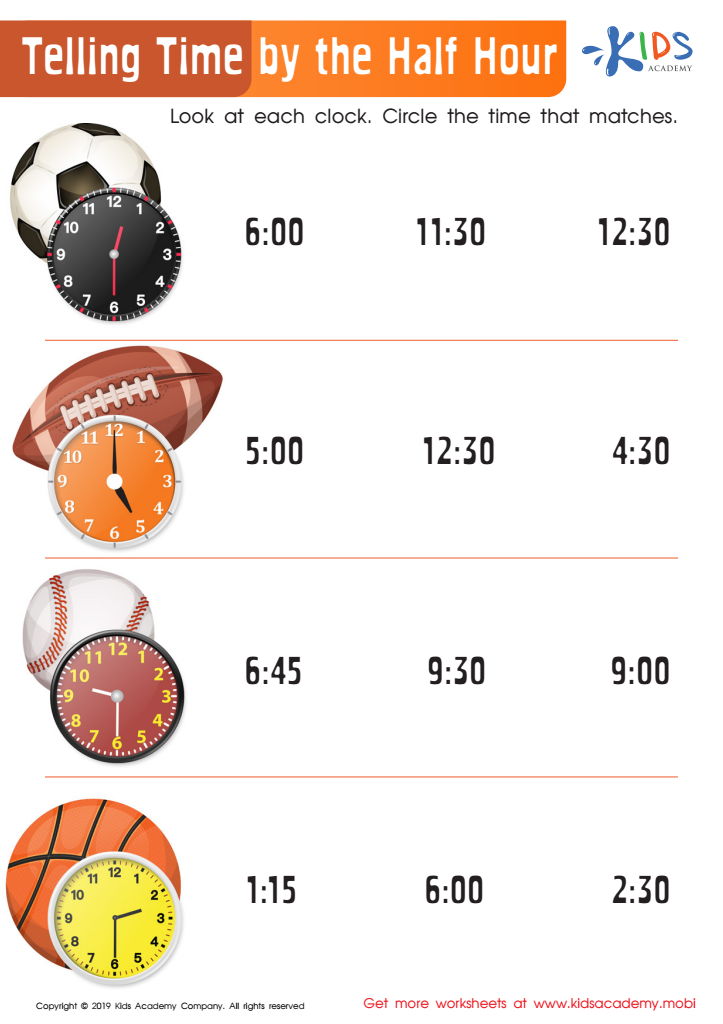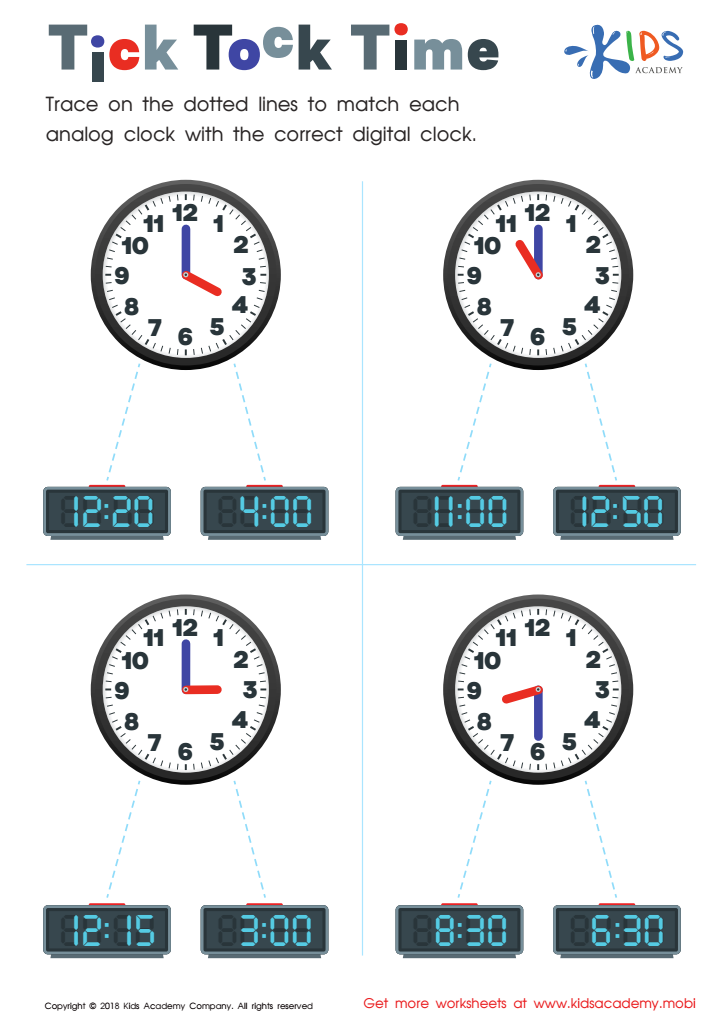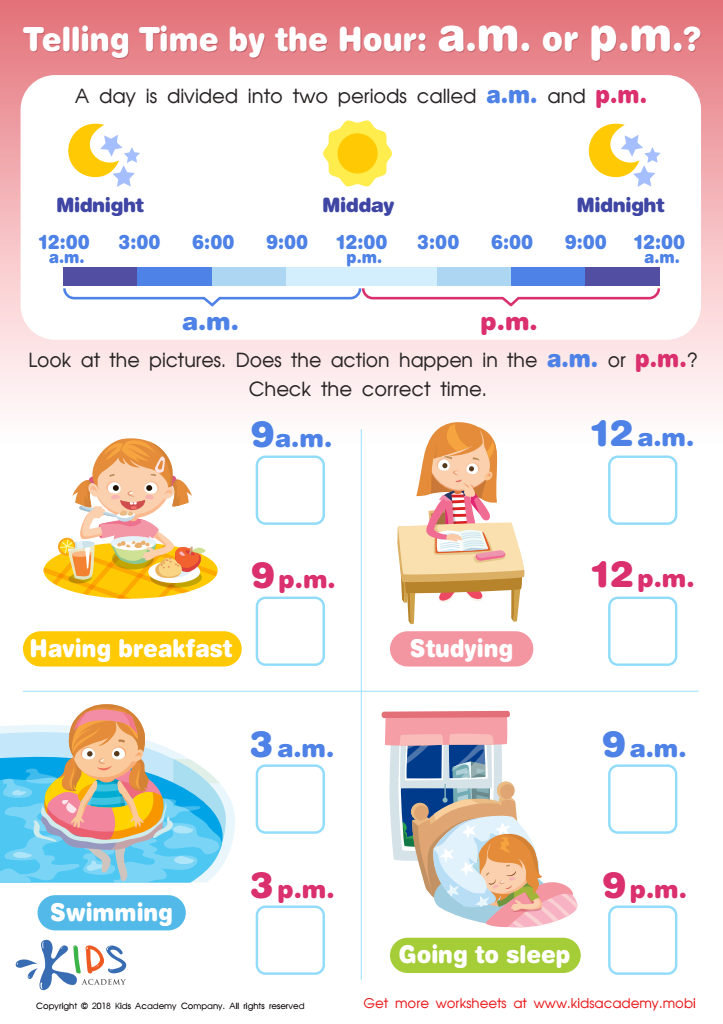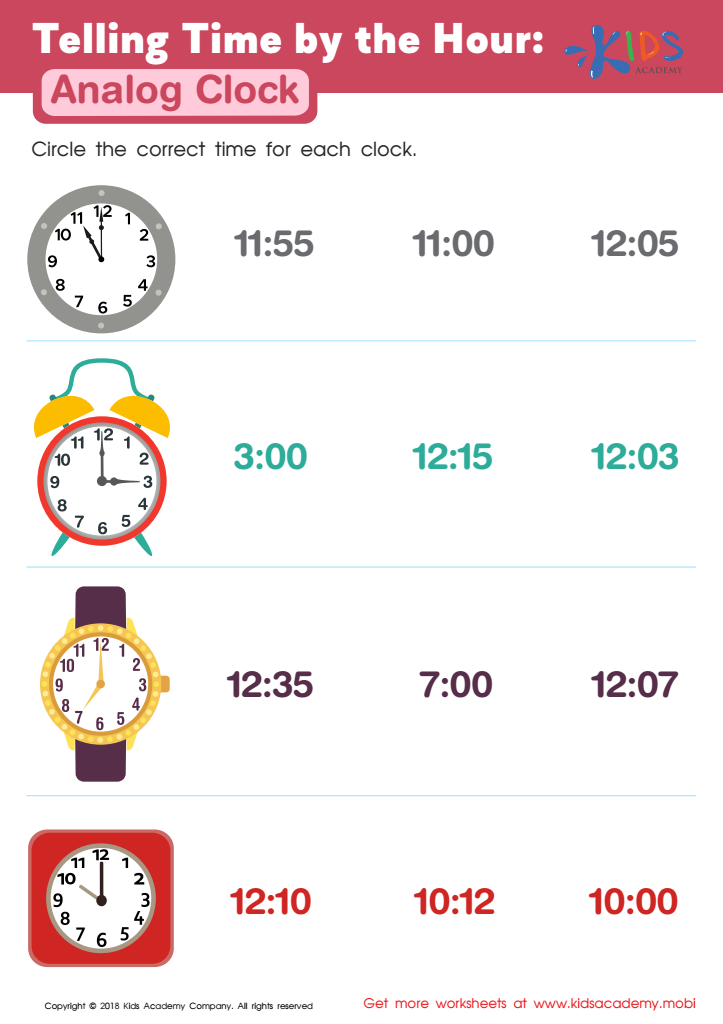Normal Time Worksheets for Ages 3-7
5 filtered results
-
From - To
Introduce your little learners to the essentials of timekeeping with our Normal Time Worksheets for Ages 3-7. Designed to align perfectly with children's developmental stages, these engaging activities use colorful visuals and fun characters to teach kids how to tell time on analog and digital clocks. Our comprehensive set of worksheets incorporates exercises on hours, half-hours, and quarter-hours, ensuring a well-rounded understanding. Perfect for classroom use or homeschooling, these printables are a wonderful way to build confidence and essential life skills in young students. Provide a solid foundation in time-telling through enjoyable, interactive learning experiences.


Telling Time by the Half Hour Worksheet


Years Worksheet


Tick Tock Time Worksheet


Tilling Time by the Hour: a.m. or p.m.? Worksheet


Telling Time by the Hour: Analog Clock Worksheet
Parents and teachers play a crucial role in the early development of children aged 3-7, and prioritizing "Normal Time" is essential for fostering healthy growth and learning. Normal Time, where children engage in unstructured free play and routine activities within a consistent framework, is critical for multiple reasons.
First, it provides children with a sense of stability and security. Kids thrive on routines as they offer predictability in their day, helping them understand their world and reducing anxiety. This foundational stability fosters an environment where children feel safe to explore and learn.
Second, Normal Time supports essential developmental milestones. Free play encourages creativity, problem-solving skills, and social interaction. It's a critical period for language development, where interacting with peers and adults nurtures communication skills and vocabulary growth.
Third, it supports physical health. Routine activities such as group play promote physical activity, essential for developing motor skills and overall health.
Finally, maintaining consistent Normal Time allows for the seamless incorporation of educational and life skills. Early exposure to structured yet flexible routines helps children develop time management, self-regulation, and independence—key skills that benefit them throughout their academic journey and beyond.
In conclusion, prioritizing Normal Time in daily schedules fosters a holistic development approach, ensuring children have the stability and opportunities required to thrive.

 Assign to the classroom
Assign to the classroom












